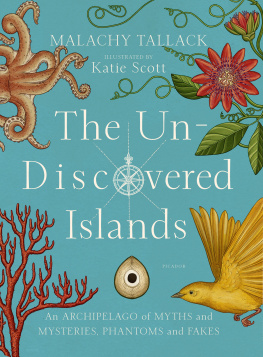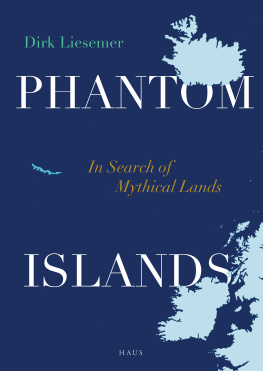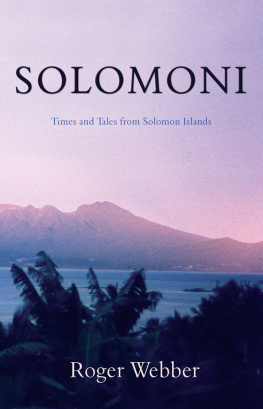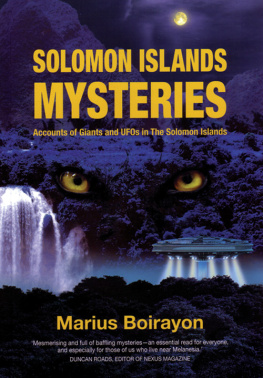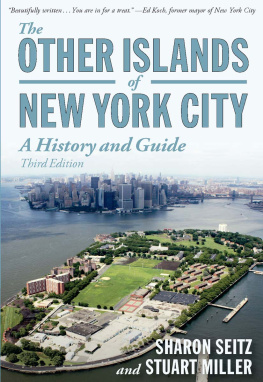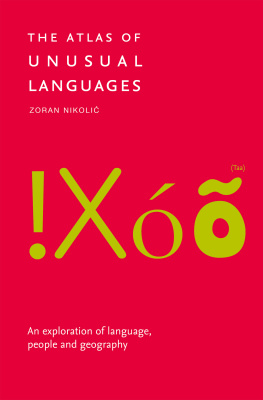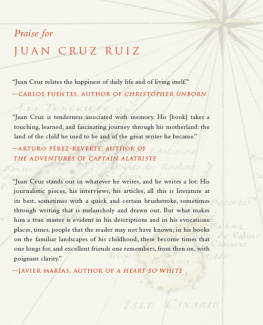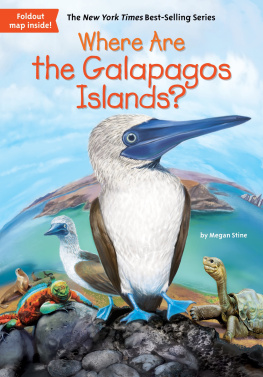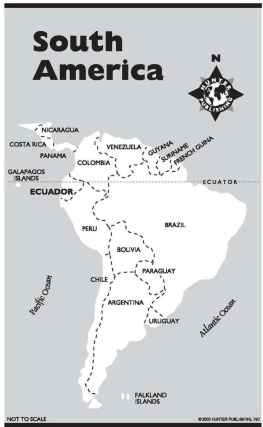Contents
Guide
The
Un-Discovered
Islands
An Archipelago of Myths and
Mysteries, Phantoms and Fakes

Malachy Tallack
Illustrated by Katie Scott
Picador / New York
The author and publisher have provided this e-book to you for your personal use only. You may not make this e-book publicly available in any way. Copyright infringement is against the law. If you believe the copy of this e-book you are reading infringes on the authors copyright, please notify the publisher at: http://us.macmillanusa.com/piracy.
------------------------------------------------------
I remember well the motto of the Anderson High School in Lerwick, displayed on the brightly coloured crest that was fixed to the gates outside. D weel and persevere, it counselled. At some point we pupils must have been told the origin of these words, for they were intimately tied to the place itself. D weel and persevere was the formative advice given in 1808 to the young man Arthur Anderson, later to be the industrialist Arthur Anderson, co-founder of the P&O shipping company, member of parliament for Orkney and Shetland, and benefactor of the school that still bears his name.
It was not a particularly stirring piece of advice. To me it sounded half-hearted, like the words of an inattentive father patting his son absent-mindedly on the head. But the story of Andersons rise from poverty to philanthropy was supposed to inspire young Shetlanders. It was part of the history of our school and the history of our islands. The implication was that, if heeded, these words could help shape our futures too. Hard work and perseverance: those were the lessons that would lead us forward.
Accompanying that motto on the crest were three Viking images an axe, a longship and a flaming brand alongside another, more ambiguous inscription. On a yellow scroll across the centre of the emblem were three words in Latin that pointed to a rather different part of our history. Dispecta est Thule: Thule was seen.
Though I passed through those gates countless times in my years at school, no teacher ever explained the Latin words they bore, and I never bothered to ask. From somewhere, I had gathered a vague notion that Thule was supposed to be the edge of the world, and that somehow Shetland was it, or at least it once had been. But in my youthful head that word was connected most closely with the Thule Bar down at the harbour, a far more mysterious and tantalising place for a teenage boy.
It was not until several years later, when school was long behind me, that I learned the origin of this motto. Thule was indeed the edge of the world, but it was more than that. It was an island once believed to be real but now absent from the maps. It was a place that was no longer a place. The words themselves came from the Roman historian Tacitus, whose father-in-law, Agricola, was governor of Britain in the late first century AD. Sailing north of mainland Scotland, Agricola had seen Shetland on the horizon and believed it to be Thule, the northernmost point in the classical world. He pinned the label to the islands, but it didnt stick for long. Thule was seen, and then once again it disappeared.
In hindsight it seems odd that such a phrase was considered a suitable decoration for those gates, since its message so obviously clashed with the one that accompanied it on the crest. According to the school motto, Shetland was as pivotal a place as we, its sons and daughters, wished to make it. Arthur Anderson was an important man his ships had sailed the worlds oceans and like him we could go anywhere and do anything. But in those three words from Tacitus, Shetland lost its identity altogether and tumbled off the edge of the map. Hitched to the idea of Thule, we barely even existed at all. It was a peculiar contradiction, but something in that unreal geography appealed to me.
Later I found that the oceans are full of such places: islands discovered and then un-discovered. They have existed in every part of the world, and some appeared on maps for many centuries before finally being erased. These islands have not been lost to rising seas or to earthquakes; they are not the victims of natural disasters. These islands are human in origin, the products of imagination and error.
Gathered in this book is a whole archipelago of un-discovered islands, grouped into six sections. The first are Islands of Life and Death: mythical places, confined to stories. Setting Out introduces islands found by early travellers in the Atlantic and Pacific, when few people knew the world beyond their own shores. The third group emerged during the Age of Exploration, as European sailors began to crisscross the globe with increasing regularity. The fourth are Sunken Lands, once thought to have been submerged; while the fifth are Fraudulent Islands, invented by hoaxers and liars. The sixth and final group are Recent Un-Discoveries, made during the twentieth and twenty-first centuries.
Each of these places has its own story. None is exactly alike. Some have helped to shape entire cultures, while others have been barely noticed. Some are strange and fabulous, while others are utterly believable. All of them reflect in some way the values of their age, and all of them have enriched the geography of the mind. This book seeks to celebrate and commemorate these un-discovered islands, and, through them, tell the story of how we have created our image of the world.


Islands of Life and Death
------------------------------------------------------
FACED WITH THE SKY we imagine gods; faced with the ocean we imagine islands. Absence is terrifying, and so we fill the gaps in our knowledge with invented things. These bring us comfort, but they conflict, too, with our desire for certainty and understanding. And sometimes that desire gives us back the absences we sought to fill.
For as long as people have been making stories, they have been inventing islands. In literature and in legend, they are there from the very start. For societies living at the seas edge, the dream of other shores is the most natural dream there is. Polynesians, Marsh Arabs, the ancient Greeks, the Celts: all imagined lands beyond their horizon. All of them told stories of islands.
These places were not quite like the everyday world. They were supernatural regions, where the lines between life and death were blurred. The ocean divides us from other lands, just as death divides us from the living. The crossing can be made, but only once. Islands, then, are perfect metaphors for other worlds and afterlives. They are separate and yet connected; they are distant and yet tangible. The sea of death is cluttered with imaginary islands.
Today, we try to draw strict lines between facts and fictions. But myth, superstition and religion have been part of human life for as long as we have been human. They have shaped our thinking and guided our actions. The way we comprehend our existence is indivisible from the stories we have told ourselves. So while the islands in this chapter may be mythical, they were no less real for that.

